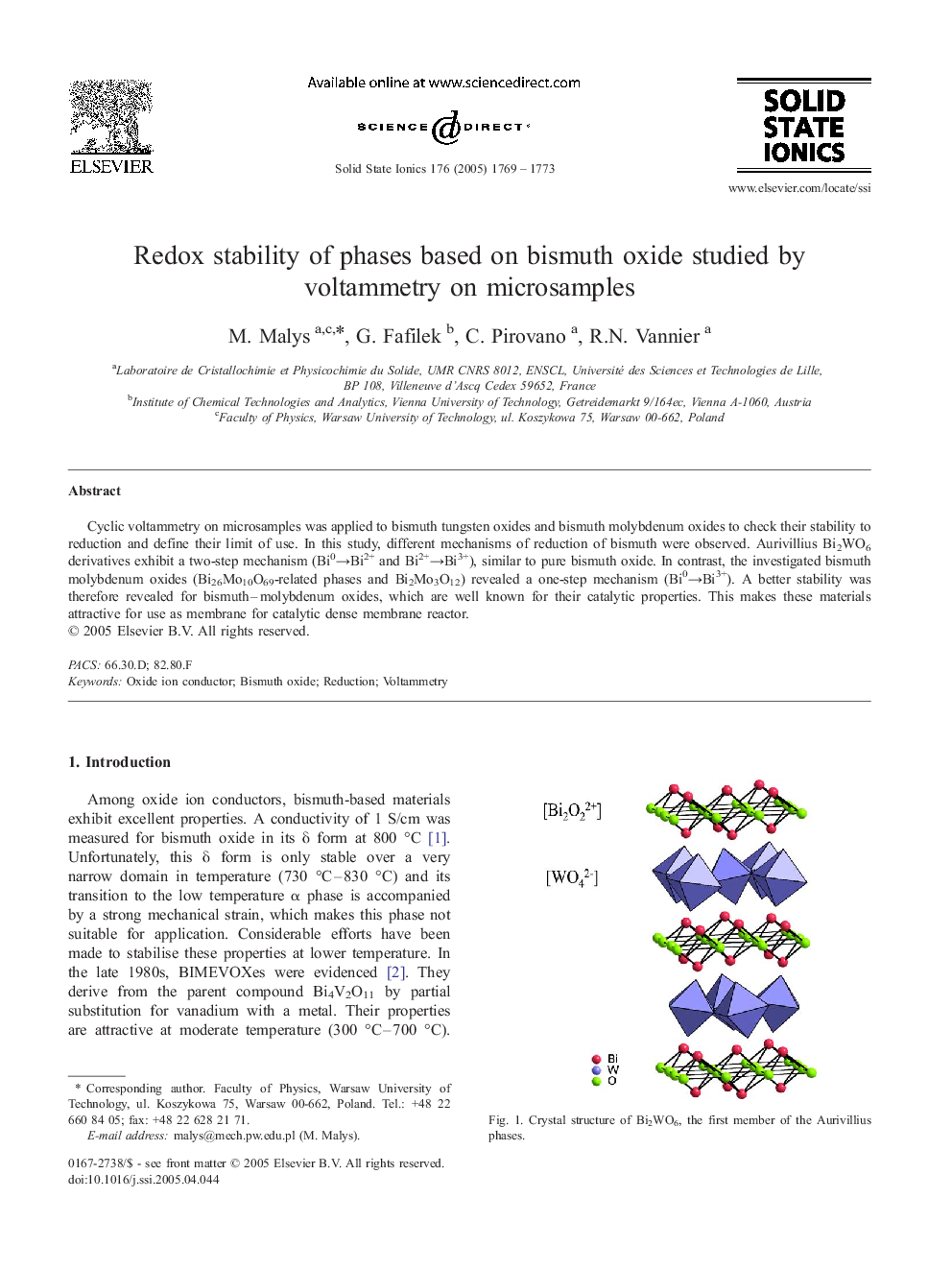| Article ID | Journal | Published Year | Pages | File Type |
|---|---|---|---|---|
| 9761593 | Solid State Ionics | 2005 | 5 Pages |
Abstract
Cyclic voltammetry on microsamples was applied to bismuth tungsten oxides and bismuth molybdenum oxides to check their stability to reduction and define their limit of use. In this study, different mechanisms of reduction of bismuth were observed. Aurivillius Bi2WO6 derivatives exhibit a two-step mechanism (Bi0âBi2+ and Bi2+âBi3+), similar to pure bismuth oxide. In contrast, the investigated bismuth molybdenum oxides (Bi26Mo10O69-related phases and Bi2Mo3O12) revealed a one-step mechanism (Bi0âBi3+). A better stability was therefore revealed for bismuth-molybdenum oxides, which are well known for their catalytic properties. This makes these materials attractive for use as membrane for catalytic dense membrane reactor.
Related Topics
Physical Sciences and Engineering
Chemistry
Electrochemistry
Authors
M. Malys, G. Fafilek, C. Pirovano, R.N. Vannier,
